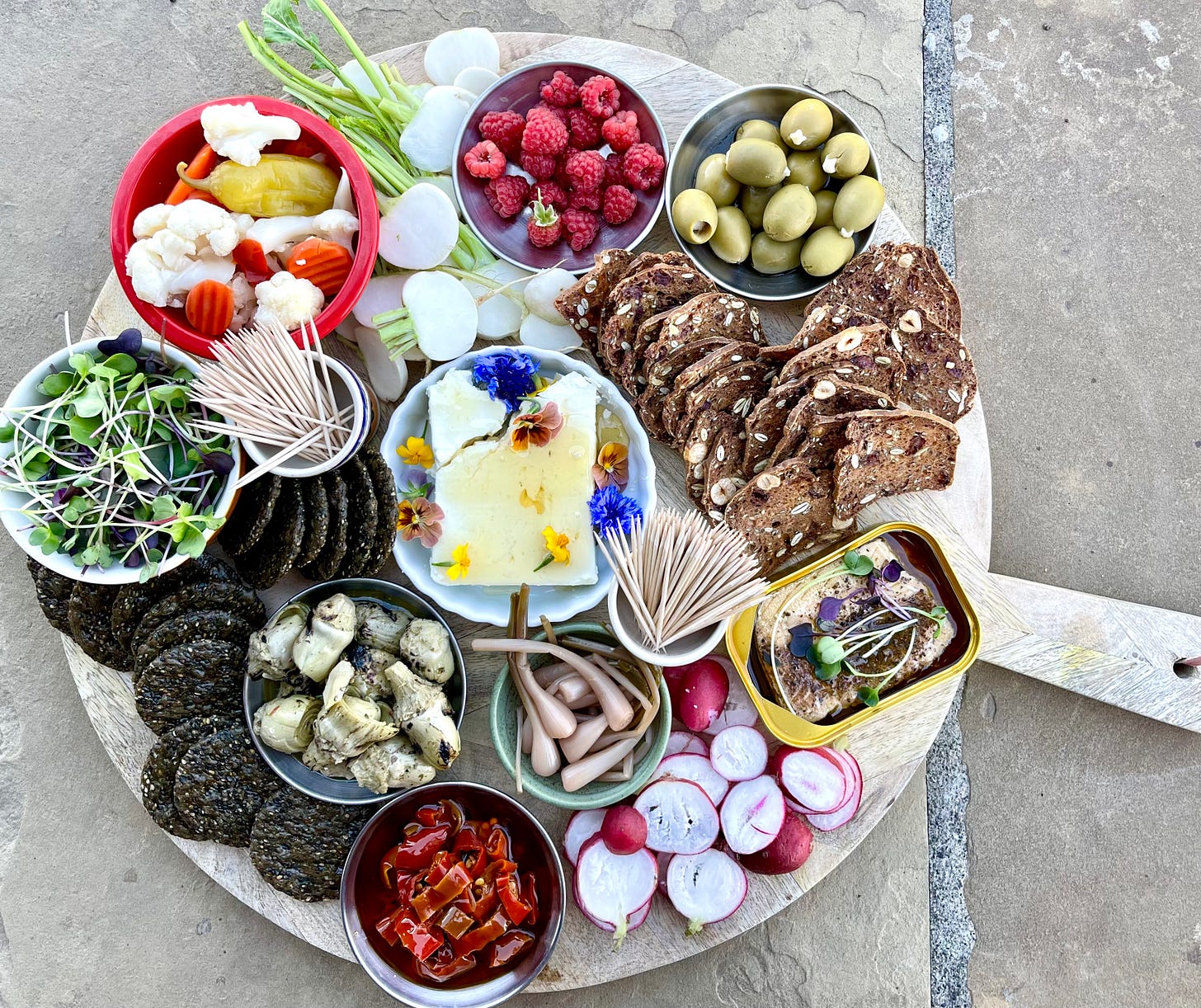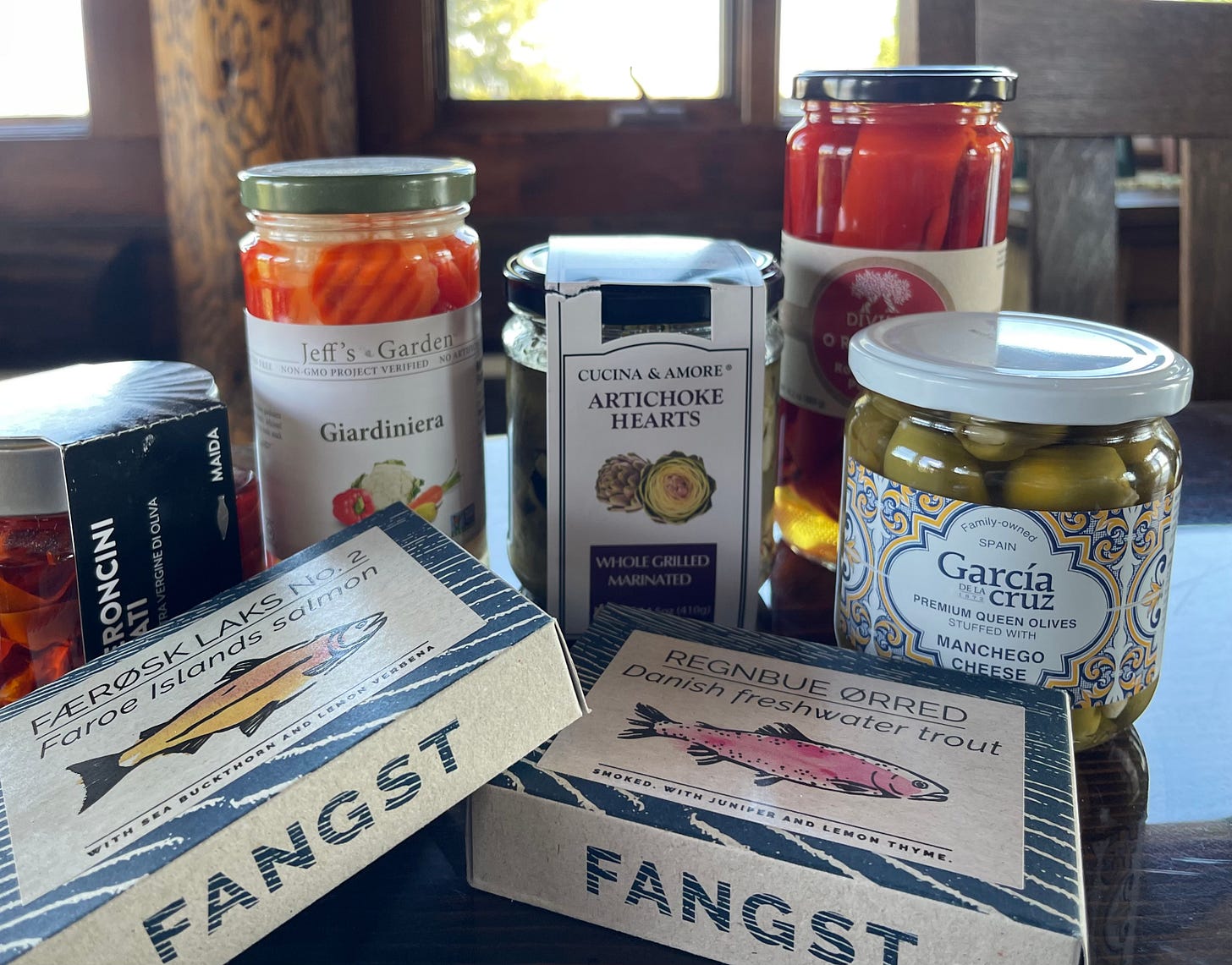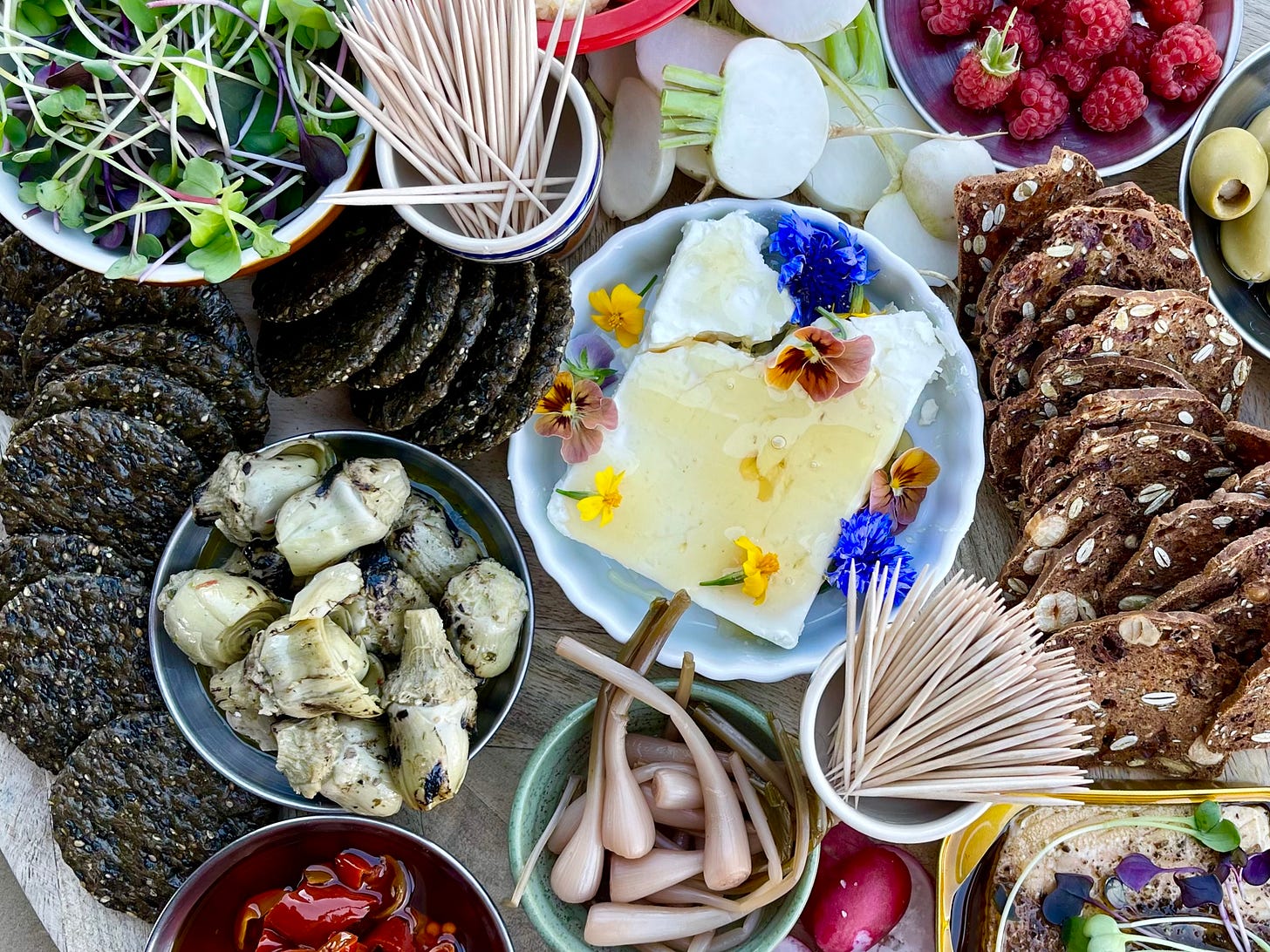Nothing says “party” like a charcuterie board! When you bring people together, which is great for brain health, a beautifully arranged platter of snackable food makes it fun to taste, nibble, discover, and delight in eating with one’s hands. The problem with most charcuterie boards, though, is that they are light on brain-healthy foods and heavy on the ones best limited or avoided if you are taking care of your brain.
I am here to show you a better way: the brain-healthy charcuterie board. First, it’s key to get past the mindset of building a board around meat and cheese. Even though charcuterie technically means meat, this isn’t that kind of board. Instead, the brain-healthy charcuterie board is filled with colorful, tasty neuroprotective foods. Your friends might even welcome the chance to feast on good-for-the-brain foods instead of mindlessly loading up on cheese. Socializing and enjoying food with others is an important tenet of brain-healthy living, but sometimes these activities derail attempts at healthy eating. That’s another reason I love the brain healthy charcuterie board—it’s something people will delight in, that’s colorful, delicious, and healthful, too!
How to make a brain-healthy charcuterie board
1. First: Shop your pantry and fridge
Chances are, you’ll find plenty of foods perfect for the charcuterie board right in your own kitchen. Look for jars of olives, pickled vegetables (cherry peppers, carrots, and asparagus spears), and roasted red peppers. Hopefully, you always have a supply of good quality tinned or jarred fish—tuna, sardines, anchovies, and sprat (tiny trout) packed in olive oil. This is the time to break out the freshest nuts you have—walnut halves, pistachios, pecans, almonds, and macadamia nuts. Store-bought hummus is good to have on hand for a protein-rich snack, and it can be dressed up for company with a drizzle of good extra-virgin olive oil, a sprinkle of paprika or sumac, and a dash of flaky salt.
More brain-healthy food in jars can be found near the pickles at the grocery store. There, you may find small baby artichoke hearts, grilled and marinated in olive oil, cherry peppers stuffed with tuna, dolmas (grape leaves stuffed with rice in a brine), and giardiniera—lightly pickled and spiced vegetables like cauliflower, carrots, and green beans. I like to stock up on these foods when they are on sale for easy, off-the-cuff entertaining or to have healthy snacks on hand.
Cheese can play a supporting role, if you like. Choose a flavorful cheese like a salty brined feta or a crumbly aged Gouda. Or, go for a nut-based cheese like my Lemony Cashew Ricotta here and on page 373 of my book. If you must include actual charcuterie (i.e. cured meat), look for a good-quality product from an artisanal source (like your neighborhood butcher) that’s low in food additives like nitrates.
2. Next, choose foods from these food groups:
Choose 1 or 2 items from each of these 7 brain healthy food groups: vegetables, berries, nuts, fish & seafood, beans & legumes, whole grains, and leafy greens.
Vegetables. Think beyond carrot and celery sticks to add exciting textures and colors. I like a mix of raw veggies (sugar snap peas, Hakurei turnips, tiny cucumbers (pepinos), jicama sticks, and French radishes) and roasted ones (delicata squash rounds, mini bell peppers, and radishes). Include at least one pickled vegetable (l’m including pickled ramps here, a special gift from a friend) for contrasting textures and gut-friendly probiotics. And don’t forget olives! Technically a fruit, olives are rich in polyphenols and fiber. If your grocery store has an olive bar, you’ll find good quality olives there. Some of my favorites are: meaty Castelvetranos, briny Kalamata, and Queens stuffed with Manchego cheese.
Beans and Legumes. Every charcuterie board should have a creamy dip; here’s where beans and legumes really shine. Fill small bowls to the brim with hummus (homemade or store bought), the Garlicky White Bean Dip in the Beans and Legumes chapter of my book, or another bean dip that you love.
Fish and Seafood. Include one or two cans of tiny tinned fish. Bonus: attractive packaging means you can serve these right from the tin. Go for these cold water varieties for more brain-healthy DHA and EPA marine-based omega-3s: anchovies, sardines, sprats (tiny trout), mussels, and smoked oysters.
Whole Grains. A few piles of sturdy crackers will make it easy to scoop up the dips and build mini canapes. Look for brands with short ingredient lists like Wasa thin crisps, black sesame seed rice crackers, or whole-grain Triscuits.
Leafy Greens. Microgreens are the perfect size for a charcuterie board, either piled on the side to use as a topping or scattered atop tinned fish. Look for interesting varieties like wasabi and red radish for even more color and spice. Or, add a pile of sturdy lettuces to use to wrap around or dip: baby gem, romaine, or endive.
Nuts and Seeds. Walnuts, pecans, pistachios, almonds, macadamias, and all good choices. If you have time, toast a batch of nuts with spices, using this Za’atar-Spiced Pecans recipe as a template. (Cooking times will vary depending on the type of nut, so adjust accordingly.)
Berries. Blackberries, cherries, strawberries, and grapes pair well with savory foods while providing a good dose of brain-boosting anthocyanins. Other fruits are great choices, too. Go beyond berries and choose colorful, seasonal fruits like apples, pears, figs, and non-sticky citrus, such as clementine segments and kumquats.
3. Choose your board
You don’t need to purchase a special charcuterie board. Instead, use something you already have: a wooden cutting board, a pretty tray, a lazy susan, or a marble or slate slab. I really love the aesthetic appeal of a round board, but yours could be rectangular or square. Choose the right size board for your group: a small board for 4 to 6 people, a medium board for 7 to 10, and a large one for 11 or more. When in doubt, size up: an abundant, overflowing board will feel more welcoming.
4. Build your board
Scatter several small bowls around the board. (These don’t have to match.) Fill with small food items like olives and nuts, dips, pickled foods, or sticky things like honey and jam. To make a small portion of cheese feel more special, drizzle with honey and top with edible flowers, fresh figs, pears, apples, or apricots.
Place 1 or 2 tins of fish on either side of the board.
Pile on the vegetables, keeping each vegetable in its own mound. Include a pile of leafy greens too, for making wraps or topping cracker creations.
Stack whole grain crackers on either side of the board.
Scatter berries wherever the board needs a flash of color.
Behold your beautiful board. It should evoke generosity and abundance. Old familiar favorites should be balanced by a few exciting new things. Don’t forget toothpicks—I like the wooden ones that come in a small barrel shaped container, which can be easily squeezed between the piles of food. Or, put them in egg cups so they stand out a little and are easy to find.
Another great thing about a brain-healthy charcuterie board: you can adapt it with the seasons. In the fall, include walnuts, fresh figs, fennel wedges, and goat cheese. In the winter, feature roasted winter vegetables (roasted butternut squash cubes, steamed tiny purple and red potatoes), citrus fruits at their peak (roasted lemons and wedges of blood oranges, mandarins, and clementines), and colorful nuts (pistachios).
What did I miss?
I’d love to hear what else would grace your brain-healthy charcuterie board!
That’s all for today. I hope you all are in the midst of a really nice weekend, friends. See you next week.
Love,
Annie








This is so inspiring. I have been stuck with a charcuterie board of meat and cheese and maybe some nuts or grapes for years. I really love all these ideas and will look forward to building my next one in this style!
Love this idea! But I'd call it an Antipasto Board. ;) In Italy we use the word Tagliera - basically cutting board - to refer to any mix of before dinner snacks. That way you can choose between Formaggi (cheese); Salumi (charcuterie) or, like your beautiful board, Antipasti.